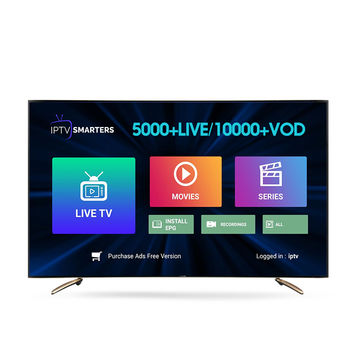Stream Any Place, Whenever: IPTV Subscription Solutions at Your Fingertips
Wiki Article
How IPTV Functions: A Step-by-Step Guide to Net Procedure Tv Innovation
Web Procedure Tv (IPTV) has reinvented the way we take in tv material, offering a new world of possibilities with the power of the net. Understanding the details of how IPTV works can clarify the technology that drives this ingenious form of media distribution. From the fundamental principles of IPTV to the complicated procedure of content distribution, each step plays a critical role in making sure a smooth watching experience. In this overview, we will reveal the hidden mechanisms that make IPTV an interesting combination of modern technology and enjoyment.IPTV Essentials
In recognizing IPTV essentials, it is crucial to realize the essential operations of this modern technology in supplying tv web content over the net. IPTV, which stands for Net Procedure Tv, uses Net Procedure (IP) networks to transmit television content to users' tools. Unlike conventional methods of broadcasting tv web content via cable or satellite signals, IPTV streams media through high-speed internet links.
Furthermore, IPTV enables interactive capabilities, such as video on need (VOD) and digital program guides (EPG), boosting the individual experience by offering even more control and versatility in accessing content. Overall, recognizing the fundamentals of IPTV sets the structure for discovering its even more advanced capabilities and the benefits it offers to modern-day tv usage.
Content Distribution Process
Effective web content delivery in IPTV systems includes a well-structured procedure that makes sure smooth transmission of television material over IP networks. The web content delivery process in IPTV begins with the development of the video clip content, which is then encoded right into electronic style ideal for IP transmission.
Middleware Capability
With the assimilation of middleware, IPTV systems gain improved capability that simplifies customer interaction and web content management. One of the vital functions of middleware in IPTV is to make it possible for individualized user experiences by giving features such as interactive program overviews, video-on-demand solutions, interactive marketing, and customer preferences administration.
Tool Compatibility
Given the crucial role of middleware in enabling seamless interaction and material administration in IPTV systems, a critical aspect to take into consideration is the compatibility of devices used for accessing the IPTV solutions. his explanation Gadget compatibility is crucial for making certain a smooth individual experience and optimum efficiency when accessing IPTV content.In the context of IPTV, tool compatibility refers to the capacity of a device to effectively engage with the IPTV service, display content appropriately, and support the necessary methods and codecs for streaming video content over the net. Various devices, such as smart Televisions, set-top boxes, smartphones, tablets, and computer systems, might have differing levels of compatibility with IPTV services.
To ensure a smooth viewing experience, it is necessary for users to select gadgets that are suitable with the specific IPTV solution they are utilizing. In addition, IPTV provider must use assistance for a variety of gadgets to accommodate the varied requirements of their user base. By prioritizing device compatibility, both customers and company can enhance the general IPTV experience.
Top Quality of Solution (QoS)
Thinking about the crucial duty of keeping a high standard of performance and integrity in IPTV systems, ensuring consistent High quality of Solution (QoS) continues to be a basic element of the user experience. QoS in IPTV refers to the ability of the system to deliver content with marginal interruptions, high resolution, and fast loading times.Company utilize QoS devices such as traffic prioritization, buffering, and error modification to maintain a secure IPTV solution. By prioritizing IPTV traffic over much less time-sensitive information, service providers can make certain smooth playback even during top usage hours. Buffering aids make up for network changes, while error adjustment techniques boost information honesty.
Constant surveillance and optimization of QoS criteria are vital to adapt to altering network problems and user demands. Eventually, a durable QoS structure is crucial for providing a seamless and pleasurable IPTV experience to individuals.
Conclusion
In final thought, IPTV operates via the transmission of television content over net procedure networks. High quality of Service plays a crucial duty in preserving the efficiency and reliability of IPTV solutions - IPTV subscription.Report this wiki page